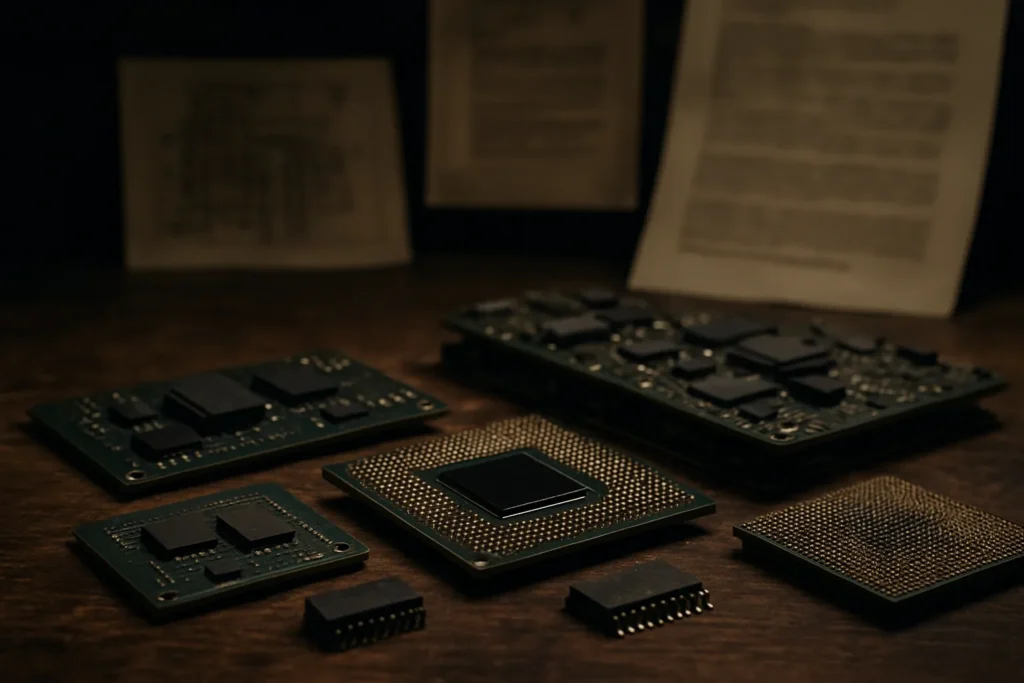Unpacking the Banderol: Sanctions Collide with the Realities of War
Inside the battered remains of a Russian missile—recovered from Ukrainian soil—lay a story few Westerners might expect: a modern weapon, crafted with more than 20 critical foreign components, many originating from the countries that have sworn to isolate Moscow’s war machine. As Ukrainian intelligence meticulously catalogued parts from the newly unveiled S8000 “Banderol” cruise missile, the uncomfortable truth of sanctions leakage emerged with jarring clarity.
Russia’s S8000, produced by the sanctioned Kronstadt company, illustrates both innovation and hypocrisy. On the surface, its technical specifications are formidable: a 115-kilogram high-explosive warhead, cruising at speeds of up to 650 kilometers per hour, with a 500-kilometer operational range and the ability to execute tighter turns than previous Russian missiles. Yet beneath the sleek exterior hums a collection of microchips, navigation systems, and telemetry modules sourced far beyond Russia’s borders—stretching from South Korea and Japan to Switzerland and the United States.
The engine, a Swiwin SW800Pro jet module, is the centerpiece of this missile’s foreign backbone. Shockingly, this component is not a closely guarded secret crafted behind closed doors; instead, it’s a model aviation engine available for roughly $16,000 on platforms like AliExpress, designed for commercial and hobbyist markets rather than battlefield destruction. As Ukraine’s Defense Intelligence recently disclosed, the telemetry backbone—the RFD900x module—derives from Australian or Chinese sources, crucial for missile guidance and communication. The Russian-made Kometa-M8 satellite receiver also features in other notorious drone systems, echoing the increasingly blurred line between civilian and military tech.
A closer look reveals a web of electronic suppliers and distributors, notably “Chip & Dip,” one of Russia’s largest electronics companies, which still manages to funnel foreign semiconductors and components into Putin’s arsenal, despite a gauntlet of Western export restrictions. Ukrainian officials have identified nearly 30 enterprises complicit in this supply chain, a testament to the tenacity of sanctioned regimes and the loophole-ridden global technology marketplace.
Weaponizing the Commons: How Global Supply Chains Fuel Conflict
On paper, Western sanctions target both the companies and individuals associated with Russia’s weapons industry. In practice, the proliferation of so-called dual-use technologies—microchips and sensors as innocuous inside your smartphone as inside a cruise missile—complicates enforcement to the point of absurdity. It begs the question: Can democracies meaningfully contain technological proliferation in the age of open global trade?
As the Banderol missile shows, sanctions have not built an impermeable barricade. Ukrainian engineers, sifting through the missile’s remains, noted microchips from American, Japanese, and Swiss companies—components virtually identical to those found in everyday consumer electronics. “We are fighting not just against Russia, but against the loopholes of globalization,” lamented one Ukrainian defense official, echoed in interviews conducted by Reuters and the BBC throughout the past year. Sanctions, while necessary, fall short when supply routes thread through cut-outs, friendly third countries, and intermediary distributors.
This dynamic is hardly new. The historian Nicholas Mulder, writing in “The Economic Weapon: The Rise of Sanctions as a Tool of Modern War,” warns that sanctions are often less effective against autocratic regimes with the means to adapt. For modern Russia, adapting has meant exploiting gaps in export controls and leveraging global e-commerce to access banned components. According to a 2023 investigation by the Royal United Services Institute, “tens of thousands” of foreign parts have been found in downed Russian weaponry—with each microchip a brick in the house of futility Western policymakers confront.
“What we’re seeing is a systematic exploitation of the global tech marketplace—where a missile designed to terrorize a city block may carry the same components as your home Wi-Fi router.”
The ambiguity of dual-use items is now a central challenge for regulatory authorities. As Harvard economist Laura Alfaro puts it, “Technology has outpaced our ability to control its movement. The end-user often becomes invisible amidst layers of legitimate commerce.” The results are missiles launched from Orion drones or modified Mi-28N helicopters, raining down destruction with a silicon core made in Shenzhen—or Seoul, or Sunnyvale.
Accountability and Policy: Charting a Path Forward
The revelations surrounding the S8000 Banderol are not mere technical trivia; they are a clarion call for advocates of global justice and technological responsibility. They force us to reckon with the real-world consequences of policy failures and the ethical complexity woven into the circuitry of modern warfare. Progressive voices in Congress have demanded tighter coordination between export control agencies and customs authorities, and renewed pressure for comprehensive, “full chain” sanctions that penalize not just suppliers but the distributors—like Russia’s infamous “Chip & Dip”—who grease the wheels of illicit military procurement.
The urgency is not lost on European lawmakers, either. The European Commission has begun tracking down and blacklisting suspected “middleman” firms in third countries, from the Caucasus to Central Asia, believed to be diverting shipments to Russia. However, enforcement gaps persist. The UN’s Institute for Disarmament Research has repeatedly called for new international protocols on export transparency, warning that lack of coordination risks turning every sanctioned component into “an orphan of accountability.”
Where does that leave global citizens—especially those who believe in a multilateral order based on peace and transparency? The cause for hope is not lost. Recent moves by major chipmakers to instill digital tracking in their products, alongside startup initiatives aiming to trace provenance through blockchain technology, point to a possible future where supply chains become less porous. Nonetheless, the burden remains on legislators and companies to treat every exported chip and circuit board with the gravity they deserve.
Western democracies face a stark choice: double down on regulatory inertia and risk compounding the devastation witnessed in Ukraine, or chart a new path—one where technology and ethics walk hand in hand, and where every policy is informed by the lessons etched into the wreckage of Ukraine’s ravaged cities.

